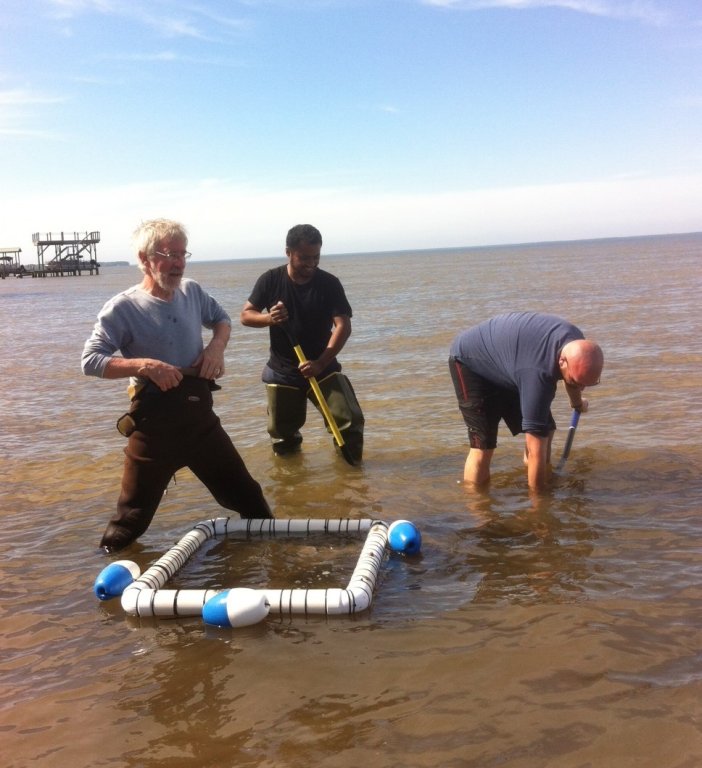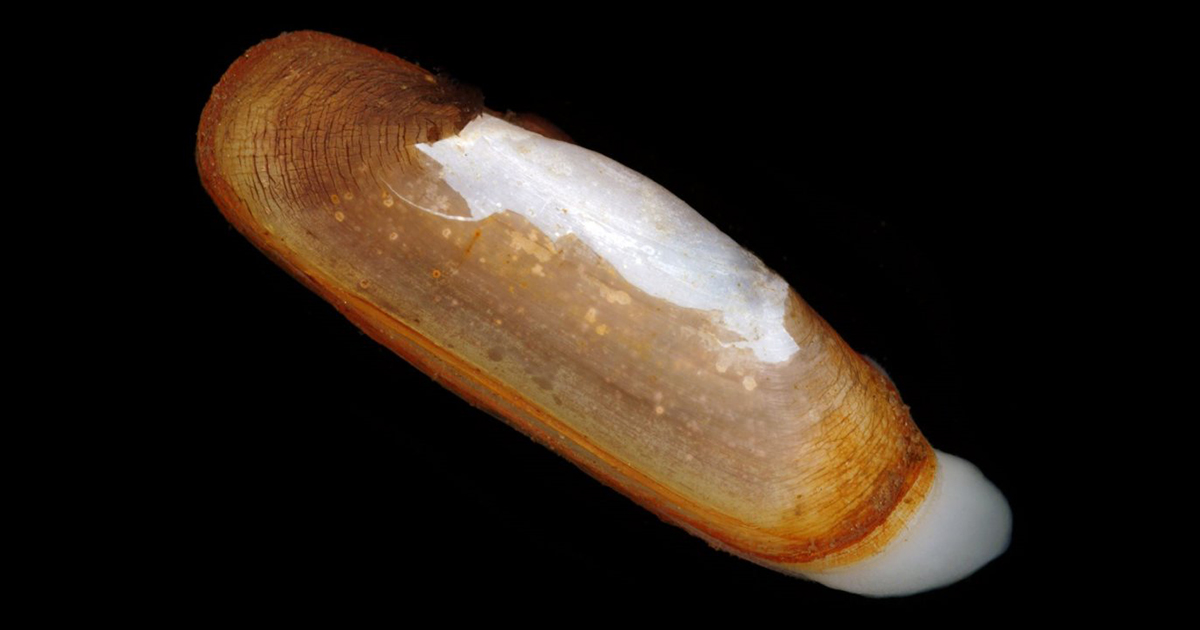Researchers conducted mesocosm experiments that simulated beach ecosystems to assess if razor clams, which are bioturbators, can influence environmental conditions and the fate of polycyclic aromatic hydrocarbons (PAHs).
The presence of razor clams lowered PAH concentrations in surface sediment by about 25 percent compared to controls without clams, but did not lower concentrations in subsurface sediments. The clams did not significantly affect PAH concentrations in the water column, though they did improve its clarity, nor did they affect how well-oxygenated the sediment was.
The researchers published their findings in Archives of Environmental Contamination and Toxicology: Effects of the razor clam Tagelus plebeius on the fate of petroleum hydrocarbons: A mesocosm experiment.
 Study scientists (L-R) Paul Klerks, Nihar Deb-Adhikary, and Alex Kascak collect razor clams in Choctawhatchee Bay, Florida. Photo credit: Paul Klerks
Study scientists (L-R) Paul Klerks, Nihar Deb-Adhikary, and Alex Kascak collect razor clams in Choctawhatchee Bay, Florida. Photo credit: Paul Klerks
Razor clams are highly-populous sediment-burrowing suspension feeders that live along coastal areas across a wide geographic range. As such, these organisms have the potential to redistribute contaminants through their feeding and burrowing processes, which can influence contaminant exposure to other organisms. During and after the Deepwater Horizon incident, shorelines were some of the most heavily-impacted areas. Therefore, this study’s researchers investigated the clams’ potential to substantially influence oil fate and distribution in estuarine and beach environments.
The team used Marlin Platform Dorado oil (a Macondo well oil surrogate) to conduct oil exposure experiments. This oil was weathered mildly (using a process called “sparging”) prior to application. Total PAH concentration in surface sediment experiments was approximately 5mg/kg, which is in the lower range of field measurements reported following the oil spill (0 – 50 mg/kg measured on the seafloor Balthis et al. 2017). This concentration was well below concentrations reported in heavily-oiled marsh sites (Lin & Mendelssohn 2012; Rouhani et al. 2017). The surface sediment oil dosing of about 13 mL or 12 g of oil per square meter of surface sediment represents approximately the SCAT “lighter oiling” category for shorelines.
The researchers initially suspected that the observed decreases in hydrocarbon concentrations were the result of enhanced microbial degradation. However, further analyses suggested that oil loss was more likely due to the clams burying the oiled surface sediment and possibly bioaccumulating the oil as they burrowed.
“Our research shows that these animals may contribute to oil spill cleanup and that an evaluation of oil spill impacts needs to take into account how the animals living there may influence what happens to the oil,” explained study author Paul Klerks. “Studies like these are important, because they provide information needed to determine where spilled oil will be found and how fast the oil will disappear. This helps us to decide when it is safe to go back to our beaches or eat our seafood following an oil spill.”
The authors suggest that future research is needed to understand the underlying mechanisms and fate of the removed hydrocarbons in surface sediment. Because a significant proportion of spilled oil can sink to the ocean floor, the team also suggests that assessments of oil spill impacts should include an evaluation of the resident benthic fauna’s influence on oil distribution and fate.
Data are publicly available through the Gulf of Mexico Research Initiative Information and Data Cooperative (GRIIDC) at doi:10.7266/N7W093WS, doi:10.7266/N7MK69WH, and doi:10.7266/N7DV1H8X.
The study’s authors are P.L. Klerks, A. Kascak, A.M. Cazan, N. Deb Adhikary, and A. Chistoserdov.
By Nilde Maggie Dannreuther and Stephanie Ellis. Contact This email address is being protected from spambots. You need JavaScript enabled to view it. with questions or comments.
This research was made possible in part by a grant from the Gulf of Mexico Research Initiative (GoMRI) to the University of Louisiana at Lafayette for the project The Effect of Sediment Bioturbators on the Biological Degradation of Petroleum in Coastal Ecosystems.



